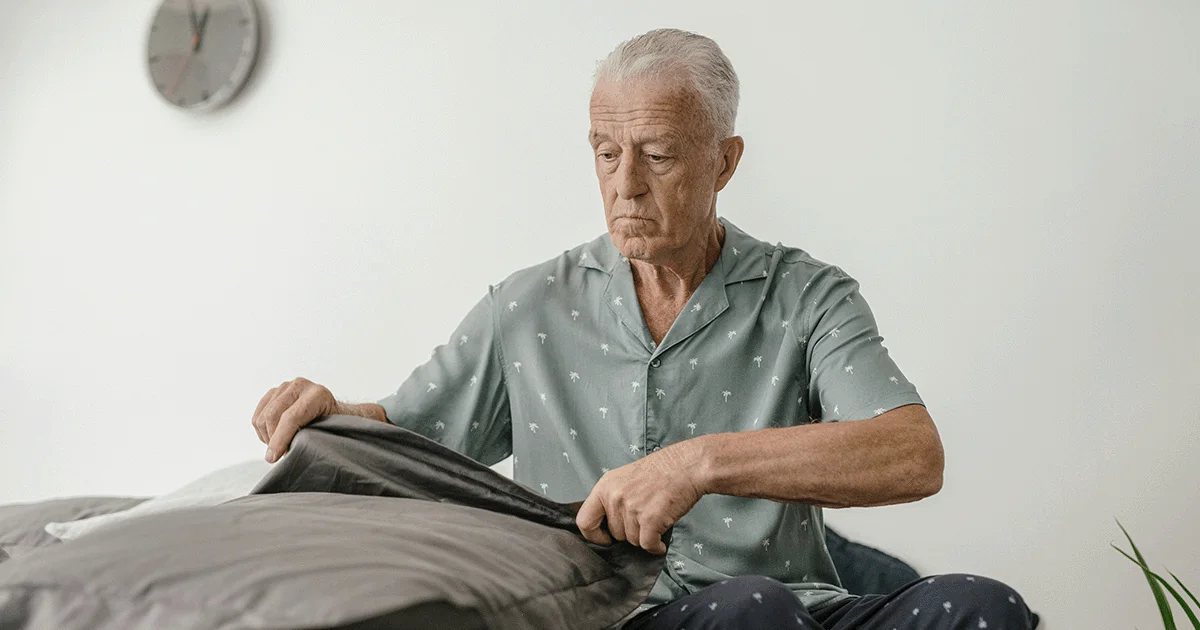Here's what we'll cover
Here's what we'll cover
Here's what we'll cover
It’s become a recurring gag in movies and TV: immediately after a rollicking round of sex, one partner rolls over to find the other fast asleep.
The culprit, while funny on the big screen, is in a very real phase called the refractory period—the period of time after an orgasm when you can’t be sexually aroused again. Read on to learn more about refractory periods and what you can do to shorten them.
What happens during the refractory period?
Famous sex researchers Masters and Johnson described four phases of the sexual cycle, each with its own unique characteristics.
The first phase, excitement, is marked by an erection in people with penises and vaginal lubrication in those with vaginas. The second phase, plateau, is a magnification of the excitement phase. This is followed by a third (and maybe favorite) phase, orgasm. Resolution is the final phase that occurs after orgasm. It’s the period of time when blood flow to and from the genitals returns to normal (Rowland, 2017).
The refractory period takes place during this resolution phase, and another orgasm can’t occur until resolution has ended. Refractory periods can be experienced quite differently between people.
Refractory period for males
If you have a penis, you may be familiar with needing some time to regroup after an orgasm.
When it comes to ejaculation, it's pretty much one and done before your erection subsides. During the male refractory period, it's physically impossible to get an erection and the body doesn't respond to sexual stimulation. Even thinking about sex might not seem compelling to some.
There has been little research into exactly why refractory periods happen. One very small study suggested that a hormone called prolactin is to blame. When men ejaculate, the brain releases prolactin, which makes them feel relaxed and satisfied. In that small study, however, one man’s prolactin levels didn’t increase after orgasm—and he happened to be the one participant who could have multiple orgasms (Haake, 2002).
One catch with prolactin is women also release it after orgasming. High prolactin levels can lower a woman’s sexual function as well, yet a woman’s refractory period experience is very different from a man’s as we’ll see below. The length of the refractory period varies widely amongst men. Some guys need just a few minutes, while others require hours. Very few men are able to physically have multiple orgasms (Wibowo, 2016; Kadioglu, 2005).
Ultimately, more research is needed to determine whether the refractory period is the result of one physiological cause or a combination of multiple factors.
Refractory period for females
For people with vaginas, the refractory period can be very short. You might become aroused and even have additional orgasms very soon after the last one. This is why some women can have multiple orgasms without much recovery time.
There has been little research into the refractory period in general, and the majority of it has been focused on men. More research is needed to better understand the refractory period in women.
How age affects the refractory period
As people age, their levels of sexual desire and sexual response cycle can change. It can take more time for men to get an erection and those erections may not be as long-lasting. Women may find that their vaginal lubrication decreases with age, especially once they reach menopause.
As a result of these biological changes (let alone other psychological or relationship changes that may occur over time) the refractory period often becomes longer.
What else affects the refractory period?
Cardiovascular health. Your overall health, particularly your cardiovascular health, can affect many aspects of your sexual health, including your erections and refractory period. If you're fit and your heart and blood vessels are healthy, there's a greater chance that blood is flowing where it needs to be more readily. That's a huge plus when it comes to getting an erection, both before and after an orgasm.
Your relationship. "Your refractory period can change day to day, week to week, and of course partner to partner," says Seth Cohen, MD, MPH, a urologist at NYU Langone Health in New York City. "If you're not into the person you're with right now, it might be one and done, and it's hard to get aroused again. If you're with somebody you're super-into, you might finish once and be ready to go [again soon].”
Your sexual arousal level. If you feel like the sex you’re having is great or it's been a while since your last encounter, you might have a shorter refractory period. You might not be as turned on during a particular session or have acclimatized to a sexual routine. But like the other variables that impact the refractory period, they can vary quite a bit. Exciting sex doesn't automatically mean you’ll have a short refractory period.
Can the refractory period be shortened?
It may be possible to shorten the refractory period with lifestyle changes. As mentioned above, erections are best when you're healthy. A few lifestyle things you can do on your own that can help improve erections and your overall health include:
Regular exercise
Eat a diverse diet rich in fruits and vegetables
Maintain a healthy weight
Avoiding tobacco and drink alcohol in moderation
If you have concerns about your refractory period or other aspects of your sexual health, a healthcare provider may be able to help. Also, keep in mind there are many aspects to an enjoyable, healthy sex life—and a post-sex nap like in the movies can be one of them!
DISCLAIMER
If you have any medical questions or concerns, please talk to your healthcare provider. The articles on Health Guide are underpinned by peer-reviewed research and information drawn from medical societies and governmental agencies. However, they are not a substitute for professional medical advice, diagnosis, or treatment.
References
Haake, P., Exton, M., Haverkamp, J., Krämer, M., Leygraf, N., Hartmann, U., et al . (2002). Absence of orgasm-induced prolactin secretion in a healthy multi-orgasmic male subject. International Journal of Impotence Research, 14, 133–135. Retrieved from https://pubmed.ncbi.nlm.nih.gov/11979330/
Kadioglu, P., Yalin, A., Tiryakioglu, O., Gazioglu, N., Oral, G., Sanli, O., et al. (2005). Sexual dysfunction in women with hyperprolactinemia: A pilot study report. Journal of Urology , 174 (5), 1921–1925. Retrieved from https://pubmed.ncbi.nlm.nih.gov/16217346/
Rowland, D., & Gutierrez, B. (2017). Phases of the Sexual Response Cycle. The SAGE Encyclopedia of Abnormal and Clinical Psychology, 1705–1706. SAGE Publications, Inc. Retrieved from https://scholar.valpo.edu/cgi/viewcontent.cgi?article=1061&context=psych_fac_pub#:~:text=In%201966%2C%20William%20Masters%20and,%2C%20and%20(4)%20resolution
Wibowo, E., & Wassersug, R. J. (2016). Multiple Orgasms in Men-What We Know So Far. Sexual Medicine Reviews , 4 (2), 136–148. Retrieved from https:// p ubmed.ncbi.nlm.nih.gov/27872023/










